What Is Methylene Blue: Comprehensive Guide and Uses
Methylene blue, once a simple textile dye, has transformed into a fascinating compound with a range of medical uses, like treating methemoglobinemia and possibly even Alzheimer’s. Its unique structure not only gives it that eye-catching blue color but also helps in various research applications, like studying cellular processes. Exciting potential therapies are on the horizon. Curious about its safety and what else it can do? There's plenty more to uncover!
Key Takeaways
- Methylene blue is a compound originally used as a textile dye, now with various medical applications, including treating blood disorders and mood disorders.
- Its molecular structure allows high solubility in water, influencing its effectiveness in biological and medical applications.
- It is effective in treating methemoglobinemia by restoring normal hemoglobin function and shows potential in neurodegenerative diseases and cancer therapies.
- Methylene blue serves as a vital research tool for studying cellular processes, metabolism, and microbiology through staining and redox indication.
- Generally safe when used correctly, common side effects include mild nausea and headache, with ongoing research exploring its future therapeutic potential.
What Is Methylene Blue?
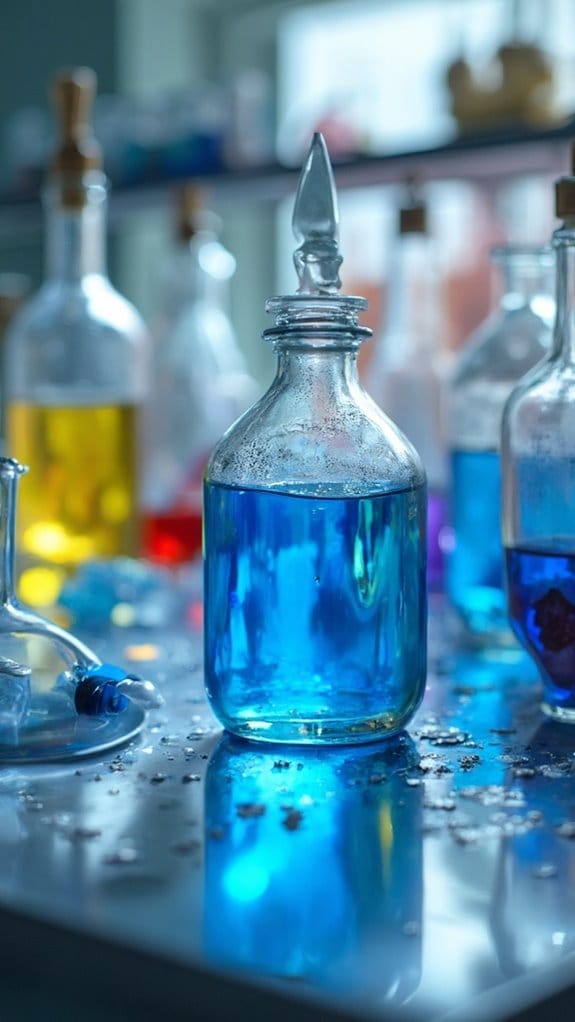
Methylene blue might sound like something straight out of a chemistry lab, but it’s a fascinating compound with a variety of uses. Did you know that its history dates back to the late 19th century? Originally created as a textile dye, it found its way into the medical field, proving beneficial for treating various conditions.
You might be surprised that the synthesis of methylene blue involves a straightforward process, combining aniline with sulfuric acid and oxidizing agents. This simple yet ingenious method paved the way for its diverse applications. From a dye to a potential treatment for certain illnesses, methylene blue has evolved greatly. It’s often hailed for its ability to improve oxygen levels in cells, offering hope in medical treatments.
Chemical Properties of Methylene Blue
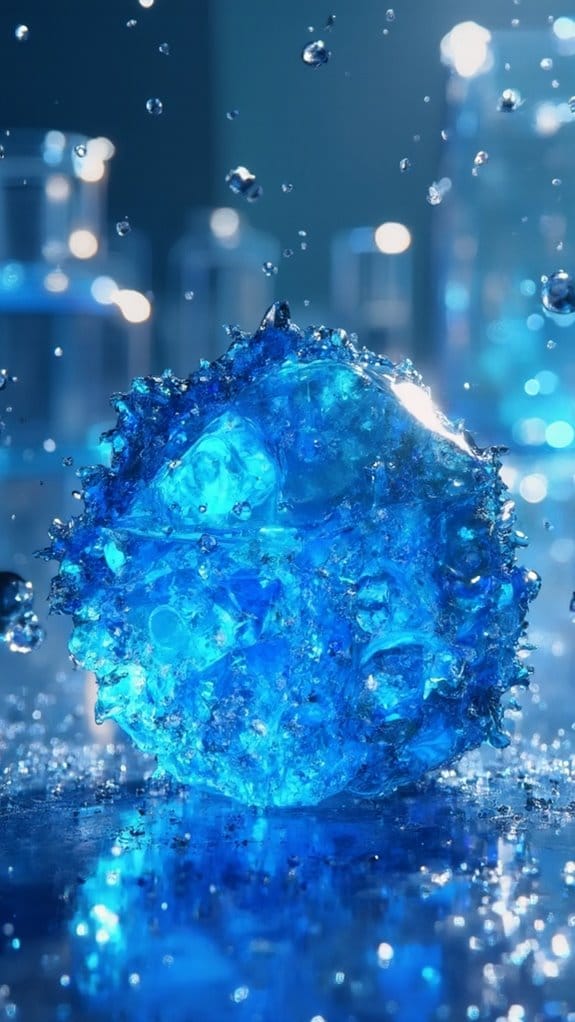
Let’s take a closer look at the chemical properties of methylene blue, starting with its molecular structure. You might be surprised to learn how its unique arrangement affects its solubility and stability in different environments. Ever wondered why some dyes work better in certain conditions?
Molecular Structure Overview
Have you ever wondered what makes Methylene Blue such a fascinating compound? Its molecular structure is where the magic happens, showcasing unique molecular bonding that contributes to its vibrant blue color. This compound contains a complex arrangement of carbon, hydrogen, nitrogen, and sulfur atoms, allowing it to interact with various biological systems.
The electron configuration plays an essential role, influencing how Methylene Blue absorbs light and participates in redox reactions. This means it can effectively donate or accept electrons, crucial for its applications in medicine and biology. So, when you think about Methylene Blue, remember that its alluring structure isn't just for show; it’s a powerhouse of chemical activity waiting to make an impact!
Solubility and Stability
Understanding Methylene Blue's molecular structure is just the beginning; its solubility and stability are equally fascinating. When you explore its solubility factors, you’ll find it easily dissolves in water, making it a convenient choice for various applications. But have you considered how temperature and pH levels can affect this process? They can change the game!
Now, let’s talk stability considerations. Methylene Blue tends to be stable under normal conditions, but exposure to light or heat can lead to degradation.
Medical Applications of Methylene Blue
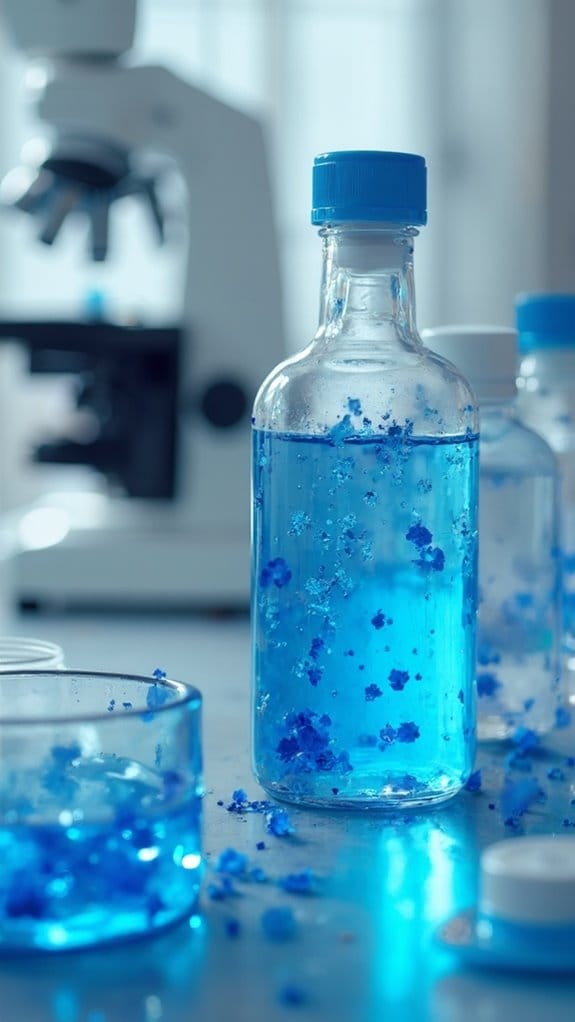
When you think about medical treatments, you mightn't consider a bright blue dye, right? But methylene blue’s therapeutic potential is truly impressive! This versatile compound has been used for decades to treat various conditions.
For instance, it’s effective in treating methemoglobinemia, a blood disorder where oxygen isn’t properly delivered to your body’s tissues. By restoring normal hemoglobin function, methylene blue can quickly improve your condition.
Additionally, it’s found its way into the world of mental health, showing promise in treating mood disorders and even Alzheimer’s disease. Yes, a dye could help with that! Isn’t it fascinating how something so simple can have such profound effects?
Methylene blue, a simple dye, may hold promise in treating mood disorders and even Alzheimer’s disease!
While researchers are still exploring its full range of uses, the potential benefits of methylene blue in medicine could offer exciting possibilities for the future.
Methylene Blue in Biology and Research
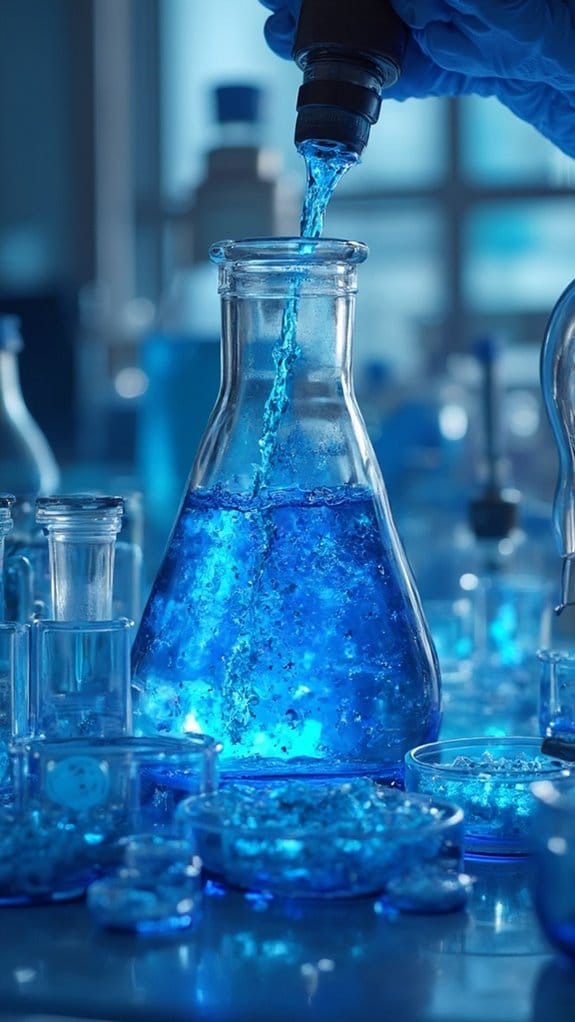
Methylene blue isn’t just a medical marvel; it’s also a fascinating tool in biology and research! You might be surprised to learn that this vibrant dye has a plethora of methylene blue applications in studying cellular processes. Its ability to stain cells allows researchers to visualize structures under a microscope, making it invaluable for understanding cellular behavior.
But what’s the biological significance? Well, it helps scientists explore the intricacies of cellular respiration and metabolism. You might find it interesting that methylene blue can even act as a redox indicator, helping identify oxidation states in live cells!
Whether you’re diving into microbiology or exploring cellular mechanisms, methylene blue opens up a world of discovery. Isn’t it amazing how a simple dye can lead to groundbreaking research? So, next time you think about methylene blue, remember its role in revealing the secrets of life itself!
Uses of Methylene Blue in Art and Dyeing
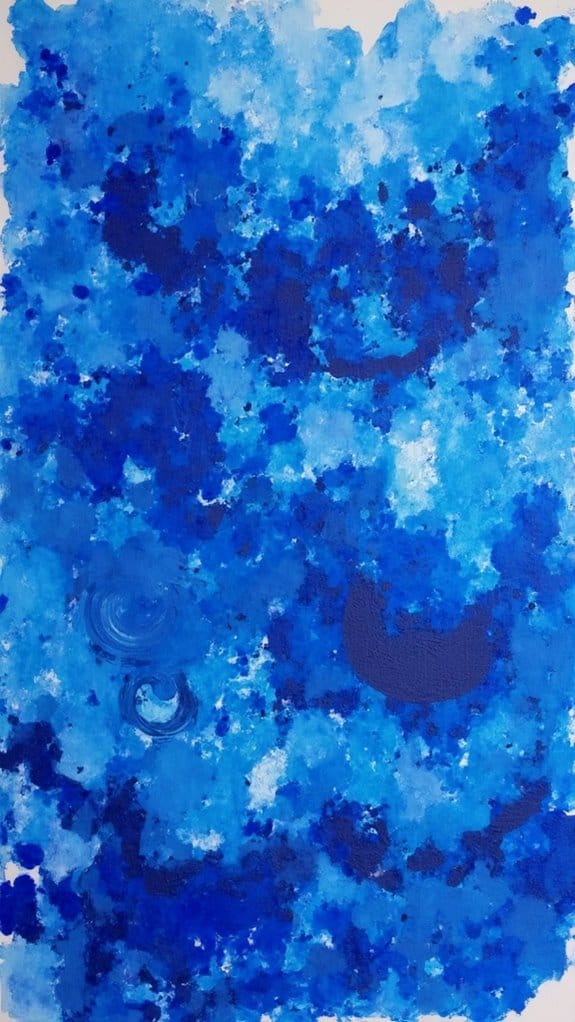
Methylene blue isn’t just for science; it’s got a colorful side that’s perfect for art and dyeing textiles! You might be surprised to learn how this vibrant dye can transform fabrics and inspire creative projects. Have you ever thought about how a splash of blue can elevate your artwork or wardrobe?
Methylene Blue in Textiles
Have you ever wondered how artists and designers achieve those vibrant, eye-catching hues in fabrics? Methylene blue applications in textiles are a game-changer. This brilliant dye not only brings color but also transforms the way you think about fabric design. By employing various dyeing techniques, you can create stunning patterns and shades.
Here's a quick look at some popular methods:
| Technique | Description | Result |
|---|---|---|
| Direct Dyeing | Applying dye directly to fabric | Bright, flat colors |
| Tie-Dye | Folding and tying fabric | Unique patterns |
| Batik | Wax resist technique | Intricate designs |
| Dip Dye | Submerging fabric in dye | Gradient effects |
| Shibori | Folding and binding fabric | Artsy textures |
Artistic Applications of Dye
When you think about art, vibrant colors often come to mind, and that's where dyes like this one shine. Methylene blue isn’t just for science; it's a versatile dye that can elevate your artistic creations. You can experiment with various dye techniques, from tie-dyeing to fabric painting, revealing endless possibilities.
Ever tried color mixing? Methylene blue blends beautifully with other hues, giving your artwork a unique twist. Picture a stunning gradient that captures attention! Plus, it’s easy to use, so you won’t feel overwhelmed. Why not grab some and let your creativity flow?
Whether you’re dyeing fabrics or creating mixed media art, this dye can help you express your artistic freedom, one vibrant hue at a time!
Safety and Side Effects of Methylene Blue
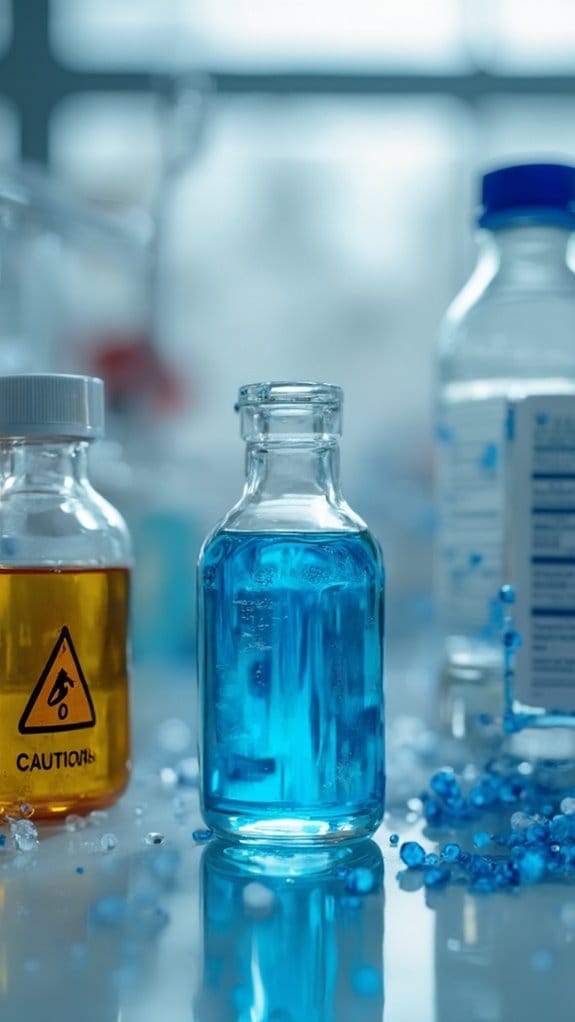
While exploring the benefits of Methylene Blue, it’s important to also consider its safety and potential side effects. You might be curious about methylene blue toxicity, especially if you're thinking about dosage recommendations. Generally, it's regarded as safe when used correctly, but overuse can lead to complications.
Here’s a quick look at potential side effects:
| Side Effect | Severity Level | Frequency |
|---|---|---|
| Nausea | Mild | Common |
| Headache | Mild | Common |
| Skin Irritation | Moderate | Less Common |
| Confusion | Severe | Rare |
| Allergic Reaction | Severe | Very Rare |
Always consult a healthcare professional before diving in. Remember, the right dosage is key to enjoyment and safety, so don’t just wing it! Your health is worth the extra effort.
Future Perspectives and Research on Methylene Blue

Understanding the safety and side effects of Methylene Blue is just the beginning; the future looks promising for this intriguing compound. As research unfolds, you might find yourself excited about potential therapies that could change lives.
The journey into Methylene Blue's potential is just beginning, with exciting therapies on the horizon that could transform lives.
Here’s what you can look forward to:
- Future innovations in neurodegenerative disease treatment
- Enhanced applications in mental health management
- New uses in antimicrobial therapies
- Advances in cellular metabolism research
- Potential roles in cancer treatment strategies
As scientists explore deeper, Methylene Blue’s versatility could lead to groundbreaking discoveries. Just think about how its unique properties might open new doors in medicine. Could it be the answer you’ve been waiting for?
With ongoing studies and a growing interest in its applications, Methylene Blue mightn't just be a historical curiosity but a cornerstone for future medical breakthroughs.
Frequently Asked Questions
Can Methylene Blue Be Used for Home Remedies?
Sure, you can explore methylene blue uses in home remedy applications! It’s been touted for treating minor infections and even for mouth ulcers. Imagine using it to boost your oral health!
Just remember, it’s not a cure-all. Have you checked with a healthcare professional first? They’ll guide you on safe usage.
Is Methylene Blue FDA Approved for All Uses?
You might be wondering about methylene blue regulations and its FDA approval status. While it's approved for specific medical applications, like treating certain blood disorders, it’s not universally approved for all uses.
So, don’t just assume it’s safe for everything! This means you should always consult a healthcare professional before diving into any self-treatment. Exploring its applications can be exciting, but safety should always come first, right?
What’s your next question?
How Does Methylene Blue Affect Water Quality?
Did you know that just a tiny amount of methylene blue can greatly improve water treatment processes? This compound helps maintain water quality by reducing harmful bacteria and promoting healthier aquatic life. By stabilizing pH levels, it creates a more balanced environment for fish and plants.
So, next time you think about water quality, consider how this vibrant dye contributes to a thriving underwater ecosystem. Isn’t that fascinating?
What Is the History of Methylene Blue's Discovery?
You might find it fascinating that methylene blue’s discovery dates back to 1876, when Heinrich Caro first synthesized it. Initially used as a dye, it quickly caught the attention of scientists for its medicinal properties. Can you imagine how such a simple compound could evolve into a multi-functional tool in biology and medicine?
Over time, its applications expanded, shaping its history and making it a staple in labs around the world.
Can Methylene Blue Stain Skin or Clothing?
You’ve probably heard tales of stains that could rival a rainbow, but methylene blue’s no joke! It can stain your skin or clothing, leading to some noticeable skin discoloration. If you accidentally spill it, don’t panic; a little soap and water might help, but you may need to scrub a bit.
Conclusion
In the grand tapestry of science, methylene blue is a vibrant thread, weaving its way through medicine, research, and even art. Isn’t it fascinating how one compound can wear so many hats? As we continue to explore its potential, who knows what surprises await us? So, whether you’re a budding scientist or an art enthusiast, methylene blue invites you to dive deeper. After all, isn’t curiosity the best color in the palette of life?
